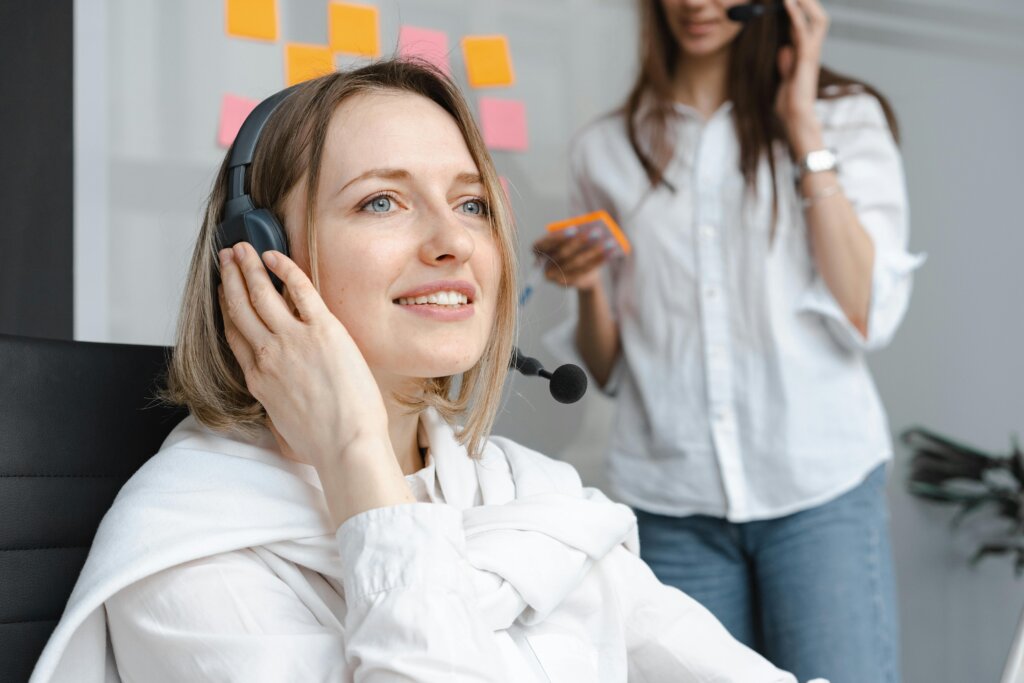Boosting Contact Center Efficiency
The Power of WFM Tools and Managed Services
Boosting Contact Center Efficiency is crucial in today’s fast-paced business environment, where customer satisfaction and cost management are paramount. Contact centers have long been pivotal to customer satisfaction and business growth, but their role today in the hyper-paced market is more critical than ever! And on top of that, in times like these, companies must be budget-conscious and achieve more with less. So, managing these operations on boosting contact center efficiency can be both complex and resource-intensive, placing immense pressure on contact centers to deliver outstanding service while controlling costs.
To navigate the challenges on boosting contact center efficiency, many organizations are turning to Workforce Management (WFM) tools and managed services. These advanced solutions not only streamline staffing, scheduling, and forecasting but also significantly boost efficiency and enhance the overall customer experience. By adopting WFM tools and services, contact centers can achieve optimal resource allocation, improve operational performance, and ultimately elevate customer satisfaction – which is a first step to boosting contact center efficiency.
Here’s how a WFM software and WFM-managed services can help your contact center thrive.
Understanding WFM Software and WFM-Managed Services
WFM Software is a powerful tool that helps contact centers effectively manage their workforce. It automates various tasks, such as:
- Absence management: Tracking and managing employee absences.
- Scheduling: Creating and optimizing agent schedules based on call volume forecasts.
- Forecasting: Predicting future call volumes and agent requirements.
- Adherence: Monitoring agent adherence to schedules to ensure optimal staffing levels.
WFM-Managed Services involves outsourcing the management of WFM software to a specialized provider. These services offer several benefits, including:
- Expertise: WFM-managed service providers have in-depth knowledge and experience in contact center operations.
- Scalability: They can quickly adapt to changing business needs and handle fluctuations in call volumes.
- Cost-effectiveness: Outsourcing WFM can reduce WFM team labor costs and improve resource utilization. These features are crucial for Boosting Contact Center Efficiency by ensuring optimal staffing levels and reducing operational costs.

Boosting Contact Center Efficiency: Leveraging WFM Tools to Optimize Operations
- Improved Staffing Optimization: WFM software enables contact centers to accurately forecast call volumes and adjust staffing levels accordingly. This prevents understaffing or overstaffing, ensures that agents are available when needed, and reduces labor costs, ultimately contributing to Boosting Contact Center Efficiency.
- Enhanced Scheduling: By automating scheduling processes, WFM software can create efficient and fair schedules that minimize overtime and improve employee satisfaction, further aiding in Boosting Contact Center Efficiency.
- Enhanced Adherence: WFM solutions monitor agent adherence to schedules, helping to identify and address any issues that may be impacting productivity and Boosting Contact Center Efficiency.
- Improved Forecasting Accuracy: WFM software leverages historical data and advanced analytics to provide accurate call volume forecasts, enabling contact centers to proactively manage staffing requirements and enhance Boosting Contact Center Efficiency.
- Reduced Labor Costs: By optimizing staffing and minimizing overtime, WFM can significantly reduce labor costs and improve overall operational efficiency, which is essential for Boosting Contact Center Efficiency.

In-depth WFM Health Check
Is your WFM system truly delivering maximum results?
How would you know if it’s not?

Maximizing WFM ROI with WFM-Managed Services
WFM-managed services can be instrumental in maximizing the return on investment (ROI) of your WFM solution while Boosting Contact Center Efficiency. Here’s how:
- Deep Domain Expertise: WFM outsourcing providers have dedicated teams with extensive experience in contact center operations. They can offer valuable insights and best practices to optimize your workforce management strategies.
- Proactive Optimization: Managed service providers continuously monitor your contact center’s performance and identify areas for improvement. They can make proactive adjustments to your WFM configuration, ensuring that you’re always operating at peak efficiency.
- Scalability and Flexibility: WFM-managed services can quickly adapt to changes in your business environment. Whether you’re experiencing growth, seasonal fluctuations, or unexpected events, they can help you adjust your workforce and resources accordingly.
- Risk Mitigation: By partnering with a WFM outsourcing provider, you can mitigate risks associated with staffing shortages, scheduling errors, and compliance issues. Their expertise can help you avoid costly mistakes and ensure that your contact center operates smoothly.
- Focus on Core Competencies: Outsourcing WFM allows you to focus on your core business activities. By entrusting workforce management to experts, you can free up your internal resources to concentrate on strategic initiatives and innovation.
- Improved Employee Satisfaction: Effective workforce management can lead to happier and more engaged employees. WFM-managed services can help you create fair and equitable schedules, improve communication, and address employee concerns promptly.
- Enhanced Customer Experience: By optimizing staffing levels and improving agent productivity, WFM-managed services can contribute to a better customer experience. This can lead to increased customer satisfaction, loyalty, and revenue.
- Data-Driven Decision Making: WFM providers can leverage advanced analytics and reporting tools to provide you with valuable insights into your workforce data. This information can help you make data-driven decisions and optimize your contact center operations.
- Maximizing System Functionality: WFM-managed services ensure that you’re leveraging the full range of features and capabilities of your WFM platform. They make sure that no tool or function goes underutilized, allowing you to get the most out of your WFM investment.
- Streamlined Issue Resolution: WFM-managed service providers help streamline the resolution of operational issues by providing real-time support and troubleshooting. They can quickly address challenges, minimize downtime, and ensure that your contact center runs smoothly without disruptions.
Conclusion
Today, in the hyper-competitive landscape of contact center operations, efficiency and exceptional customer service are paramount. Embracing Workforce Management (WFM) software and WFM-managed services offers a powerful solution to meet these demands head-on. By streamlining scheduling, improving forecast accuracy, and enhancing agent productivity, these tools not only optimize day-to-day operations but also contribute to substantial cost savings. WFM-managed services take it a step further by providing expert guidance, continuous optimization, and access to advanced analytics, ensuring that your WFM investments deliver maximum returns.
Ultimately, integrating WFM solutions into your contact center strategy equips you with the agility and insight needed to navigate evolving customer expectations and operational challenges. Investing in these technologies and services not only enhances operational efficiency but also sets the stage for delivering an exceptional customer experience, driving long-term business success. By leveraging the full potential of WFM software and WFM-managed services, you position your contact center to thrive in today’s dynamic market environment.
FrontLogix’s WFM managed services are seamlessly integrated with Verint’s advanced WFM technology, combining powerful automation with human expertise to optimize workforce operations and drive efficiency gains.
FrontLogix, a leader in WFM-managed services, brings industry expertise and tailored solutions to help contact centers maximize efficiency and improve operational performance. With a focus on delivering exceptional customer experiences, FrontLogix’s WFM services provide the flexibility and scalability needed to meet evolving business demands. Our managed services ensure ongoing support, continuous optimization, and the strategic insights necessary to stay ahead in today’s competitive market.
Want to transform your workforce management and see impressive ROI? Contact us today, and let’s discuss how we can help streamline your operations, enhance productivity, and take your business to the next level.

Found this useful?
Subscribe to our newsletter and get CX and WFM news delivered to your inbox.
Don’t worry, we won’t flood your inbox – just one insightful email a month!






































